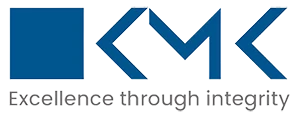KPIs Every U.S. SMB Should Monitor: From CAC to Cash Burn

In the dynamic world of small and medium-sized businesses (SMBs) in the U.S., making informed decisions is crucial for survival and growth. Key Performance Indicators (KPIs) offer a clear view into the health of your business, enabling you to identify strengths, weaknesses, and opportunities. Monitoring the right KPIs can spell the difference between thriving and merely surviving.
Suppose you’re an SMB owner or manager looking to sharpen your financial and operational insights. In that case, this blog will introduce you to essential KPIs every U.S. SMB should track, starting from Customer Acquisition Cost (CAC) to Cash Burn. Let’s dive in.
What Are KPIs and Why Do They Matter?
KPIs are quantifiable metrics that reflect how effectively a business is achieving key objectives. Unlike generic data points, KPIs focus on what matters most—whether it’s profitability, customer retention, or operational efficiency.
For U.S. SMBs, tracking KPIs is not just about numbers; it’s about understanding the story those numbers tell. This empowers you to:
- Optimize marketing spend
- Streamline operations
- Manage cash flow better
- Improve customer satisfaction
- Make strategic decisions with confidence
Customer Acquisition Cost (CAC)
What is it? CAC is the total cost of acquiring a new customer, including marketing expenses, sales team costs, promotions, and any other costs tied to customer onboarding.
Why is it important? Understanding CAC enables you to assess the effectiveness of your marketing campaigns and sales efforts. A high CAC relative to the customer’s lifetime value suggests that you may be spending too much to attract customers.
How to calculate it?
CAC = Total Marketing + Sales Expenses / Number of New Customers Acquired
Example:
If you spent $10,000 on marketing and sales in a month and acquired 100 customers, your CAC is $100.
Customer Lifetime Value (CLV or LTV)
What is it? CLV estimates the total revenue you can expect from a single customer during their relationship with your business.
Why track it? By comparing CLV with CAC, you can determine whether your customer acquisition strategy is sustainable and effective. Ideally, CLV should be at least three times CAC.
How to calculate it?
A simple formula is:
CLV = Average Purchase Value x Purchase Frequency x Customer Lifespan
Gross Profit Margin
What is it? Gross Profit Margin represents the percentage of revenue left after subtracting the cost of goods sold (COGS). It reflects how efficiently you produce and sell your product or service.
Why is it important? Healthy gross margins indicate pricing power and operational efficiency. It also signals whether your business can sustain overhead and operational expenses.
How to calculate it?
Gross Profit Margin = (Revenue−COGS) / Revenue x 100%
Operating Cash Flow
What is it? Operating Cash Flow is the cash generated by your regular business operations. It excludes external financing or investing activities.
Why monitor it? It indicates whether your core business activities are generating enough cash to sustain operations and growth.
Burn Rate (Cash Burn)
What is it? Burn Rate measures how quickly your business is spending cash, especially important for startups and growing SMBs.
Why track burn rate? Monitoring burn rate helps you anticipate how long your current cash reserves will last, which is crucial for planning fundraising or cost-cutting measures.
How to calculate it?
Typically, burn rate is calculated monthly as:
Burn Rate = Starting Cash − Ending Cash
Net Profit Margin
What is it? Net Profit Margin is the percentage of revenue remaining after all expenses, including operating costs, interest, and taxes.
Why is it critical? It’s the ultimate indicator of business profitability. A growing net profit margin means your business is not only generating revenue but also managing expenses effectively.
How to calculate it?
Net Profit Margin = Net Profit / Revenue x 100%
Accounts Receivable Turnover
What is it? This KPI measures the speed at which your business collects payments from customers.
Why track it? Faster collections improve cash flow, reduce bad debt risk, and help with working capital management.
How to calculate it?
Receivable Turnover = Net Credit Sales / Average Accounts Receivable
Inventory Turnover Ratio
What is it? This ratio indicates how frequently your inventory is sold and replenished over a specified period.
Why is it useful? It helps identify slow-moving stock, freeing up cash tied to inventory and reducing storage costs.
How to calculate it?
Inventory Turnover = COGS / Average Inventory
Employee Productivity
What is it? Employee productivity is measured by the revenue generated per employee.
Why measure it? It highlights workforce efficiency and helps with staffing decisions.
How to calculate it?
Employee Productivity=Total Revenue/ Number of Employees
Customer Retention Rate
What is it? This KPI indicates the percentage of customers who continue to do business with you over a specified period.
Why track retention? Retaining customers is often cheaper than acquiring new ones. A high retention rate means satisfied customers and recurring revenue.
How to calculate it?
Retention Rate = Customers at End of Period − New Customers at Start of Period x 100%
Read Also: Startup Success Starts with These Financial Ratios — Know Them, Track Them, Grow Faster
How to Use KPIs Effectively in Your SMB
Tracking KPIs is just the first step. Here’s how to leverage them effectively:
- Set Clear Goals: Decide what success looks like for your business. Whether it’s increasing revenue, reducing CAC, or improving cash flow, having clear goals ensures you track relevant KPIs.
- Use the Right Tools: Invest in reliable accounting and analytics software that automates KPI tracking and reporting. This reduces errors and saves time.
- Review KPIs Regularly: Conducting monthly or quarterly reviews helps you spot trends early and make data-driven adjustments.
- Align Teams Around KPIs: Ensure your sales, marketing, finance, and operations teams understand the KPIs that matter and how their roles influence them.
Final Thoughts
KPIs are more than just numbers on a dashboard—they are the lifeblood of your SMB’s strategy. By tracking metrics like CAC, cash burn, gross and net profit margins, and customer retention, you gain clarity and control over your business trajectory.
Remember, the most effective KPIs are those aligned with your unique goals and regularly reviewed to inform intelligent decision-making. Whether you’re bootstrapping or scaling, mastering these KPIs will give you a significant edge in the competitive U.S. marketplace.
How KMK Can Help?
With a deep understanding of financial KPIs and industry-specific metrics, KMK empowers businesses not only to track critical performance indicators, such as CAC, CLV, cash burn, and profit margins, but also to interpret them for informed strategic decision-making. By acting as an extended finance team, KMK ensures timely financial reporting, KPI dashboards, and actionable insights—all while maintaining compliance and optimizing costs. Whether you’re a startup looking to manage cash flow or an established business aiming to scale, KMK Ventures delivers the financial clarity and operational support you need to grow confidently.
Reach out to us today at info@kmkventures.com to schedule a free consultation and learn more about how KMK can help you track the critical KPIs for your business.
 Harshvardhan Kothari is a qualified Chartered Accountant from the Institute of Chartered Accountants of India (ICAI) with over five years of post-qualification experience in accounting, financial management, and compliance. He possesses in-depth expertise in U.S. accounting practices, with a strong focus on maintaining regulatory standards and ensuring fiscal transparency. Known for his meticulous attention to detail and results-oriented approach, Harshvardhan has successfully managed and overseen complex financial operations, driving efficiency and delivering measurable outcomes across various business functions. Outside of his professional role, Harshvardhan is an avid sports enthusiast who enjoys playing cricket and table tennis.
Harshvardhan Kothari is a qualified Chartered Accountant from the Institute of Chartered Accountants of India (ICAI) with over five years of post-qualification experience in accounting, financial management, and compliance. He possesses in-depth expertise in U.S. accounting practices, with a strong focus on maintaining regulatory standards and ensuring fiscal transparency. Known for his meticulous attention to detail and results-oriented approach, Harshvardhan has successfully managed and overseen complex financial operations, driving efficiency and delivering measurable outcomes across various business functions. Outside of his professional role, Harshvardhan is an avid sports enthusiast who enjoys playing cricket and table tennis.
Let’s Take Our Conversation Ahead
KMK is a top outsourced accounting and tax service provider. We offer end-to-end accounting and tax services for small to mid-sized businesses, with a team of 875+ professionals, including certified public, chartered, and staff accountants.
USA:
651 N Broad St Suite 205, Middletown, DE 19709, USA
Phone: 310-362-2511
India:
300, Sankalp Square-3B
Sindhu Bhavan Marg,
Ahmedabad, Gujarat 380058
For Career: 91-98240-42996
Developed by Bluele | Copyright © 2025 | KMK Ventures Private Limited. | All Rights Reserved


